Why and How to Help Teachers Leave Cueing Behind: Science of Reading Professional Development That Works
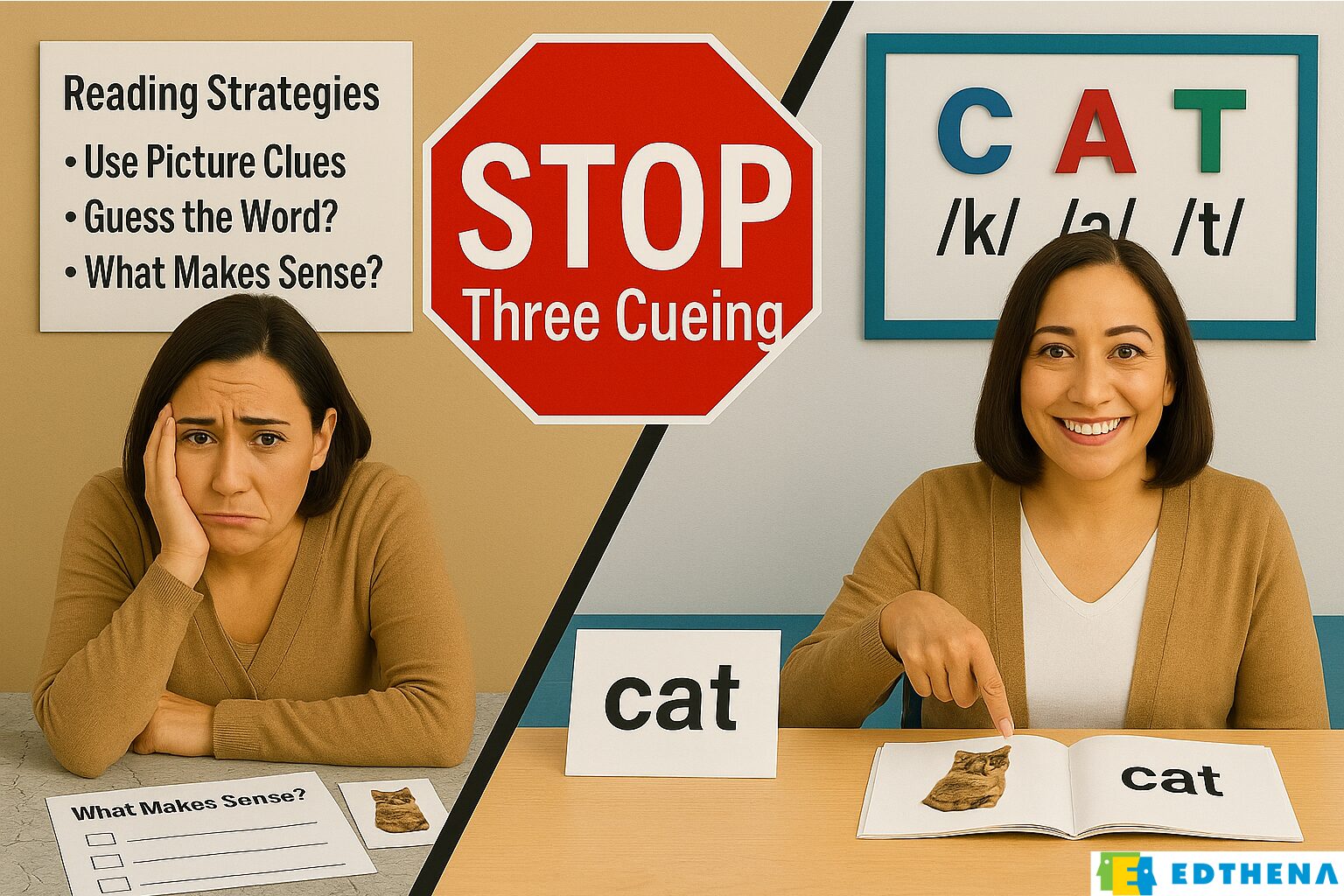
Results from the 2024 National Assessment of Educational Progress show a troubling trend: less than 33 percent of fourth- and eighth-graders tested demonstrated reading proficiency.
Even before the pandemic, reading performance was low. Now, those challenges have grown, driving schools to search for targeted interventions and methods to improve literacy instruction.
The three-cueing system, originally developed in the 1960s, is no longer considered best practice because it asks students to guess at the meaning of words. Instead, they are embracing a focus on phonemic awareness, fluency, and other components of reading highlighted by the Science of Reading, a research-backed approach that aims to help all students become strong readers.
But for many educators, making this shift requires more than swapping out materials and attending a single workshop or training. It takes deliberate practice and support to make and sustain changes related to implementing new teaching methods. Below, we explore why schools are moving away from the three-cueing system, what is taking its place, and critical steps to help ensure a successful transition.
Why the three-cueing system falls short
For decades, the three-cueing system has dominated early reading instruction in American classrooms. This approach teaches children to identify unfamiliar words by using:
- Semantic cues. Does it make sense in context?
- Syntactic cues. Does it sound right grammatically?
- Graphophonic cues. What do the letters suggest?
For example, when students encounter an unfamiliar word like “horse” in the sentence “The girl rode the ___ across the field,” the three-cueing system encourages them to:
- Look at the picture (semantic)
- Consider what would make sense in the sentence (syntactic)
- Check the first letter or letter patterns (graphophonic)
While seemingly intuitive, this approach teaches students to rely on guessing strategies rather than developing critical decoding skills. The result? Many students struggle when they encounter more complex texts without pictures or predictable contexts.
Cognitive science research supports this observation, revealing significant flaws in the three-cueing system. Researchers note that it:
- Mimics struggling reader behaviors. Eye-tracking studies indicate that skilled readers efficiently decode words by comprehensively processing all letters within a perceptual span, rather than through slow, serial ‘letter-by-letter’ guessing.
- Creates “word callers.” Some students learn to pronounce words without understanding them, mistaking pronunciation for comprehension.
- Builds fragile reading strategies. When students reach more advanced texts without illustrations or predictable patterns, their reading progress often plateaus or declines, what educators call the “fourth-grade slump.“
- Disadvantages vulnerable learners. Students with dyslexia or language processing challenges are particularly harmed when not taught explicit decoding skills.
Research on reading development shows that early reading difficulties compound over time. Students who struggle with foundational decoding skills read less frequently, which limits their exposure to vocabulary and complex language structures. Meanwhile, proficient early readers engage with more text, accelerating their language development and comprehension abilities. This widening gap between skilled and struggling readers demonstrates how inadequate foundational instruction can perpetuate achievement disparities.
In contrast, the Science of Reading emphasizes systematic, explicit instruction. Rather than guessing words based on visuals or sentence patterns, students learn to decode using letter-sound relationships. This shift moves students from uncertainty to confidence and from surface-level comprehension to true understanding.
What is the Science of Reading?
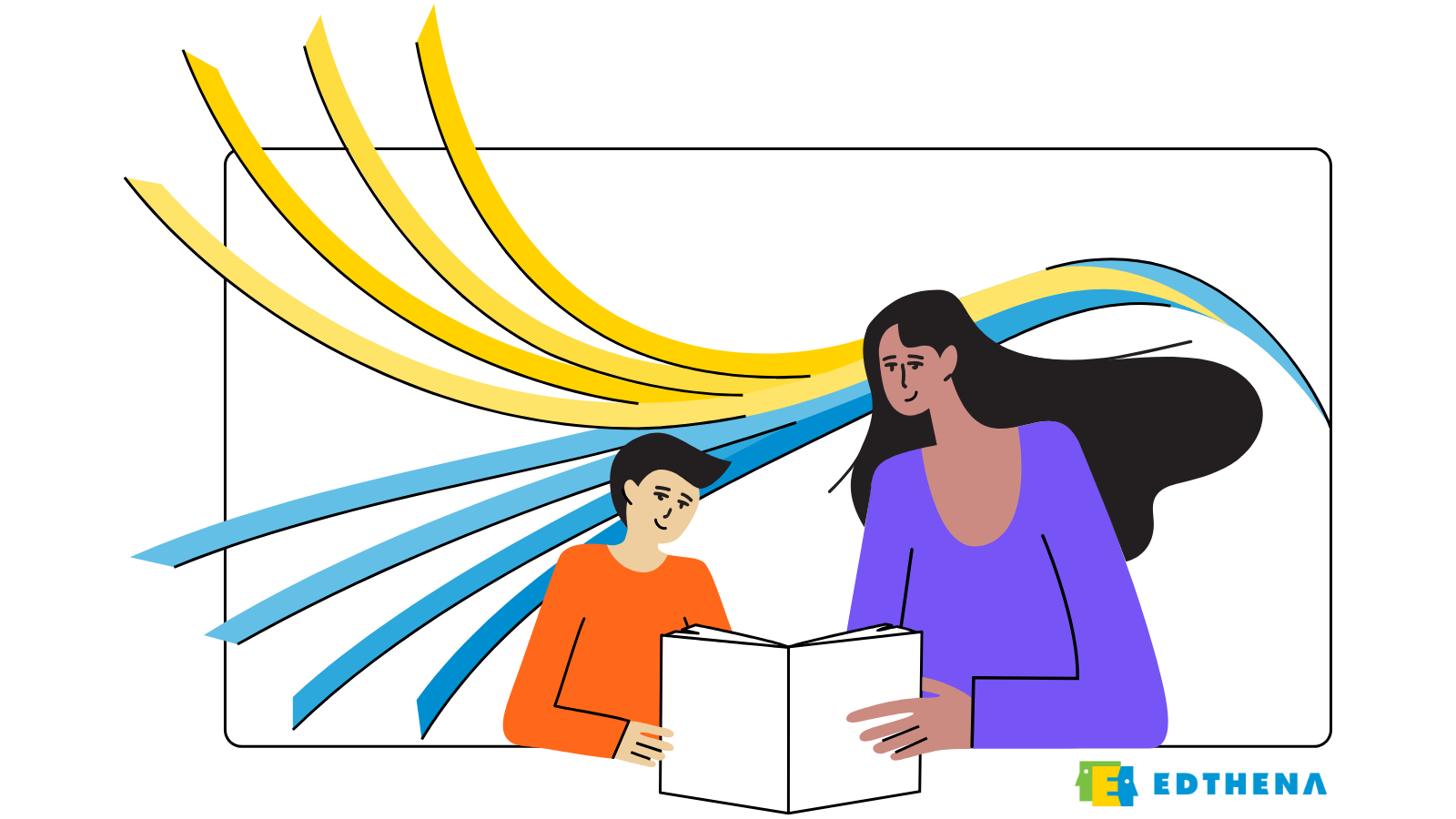
The Science of Reading draws on more than 50 years of research in cognitive science, education, and neuroscience to explain how children best learn to read.
Unlike the three-cueing system, this evidence-based approach emphasizes:
- Systematic phonics instruction rather than contextual guessing.
- Explicit teaching of sound-letter relationships.
- Sequential skill building that follows developmental progression.
- Regular practice with decodable texts that reinforce taught patterns.
The Science of Reading identifies five essential components of effective reading instruction:
- Phonemic awareness. Helps students understand that words are made up of individual sounds, which can be identified, segmented, and manipulated.
- Phonics. Builds on phonemic awareness by teaching how letters represent sounds and combine to form words, giving students tools to decode unfamiliar text.
- Fluency. Develops students’ ability to read smoothly and expressively, allowing focus on meaning rather than decoding individual words.
- Vocabulary. Expands students’ understanding of word meanings, supporting stronger comprehension of increasingly complex texts.
- Comprehension. Guides students to think critically about text, drawing inferences, connecting ideas, and constructing meaning from reading.
Together, these components provide a full picture of what it means to be a proficient reader. And unlike cueing, this approach gives students tools they can use across all texts, regardless of whether there’s a picture or a familiar storyline to lean on.
Why traditional Science of Reading professional development is failing teachers
Across the country, districts and states are shifting policies and curricula to align with the Science of Reading. To boost literacy rates and improve reading outcomes, more than 40 states have enacted legislation requiring Science of Reading-aligned instruction.
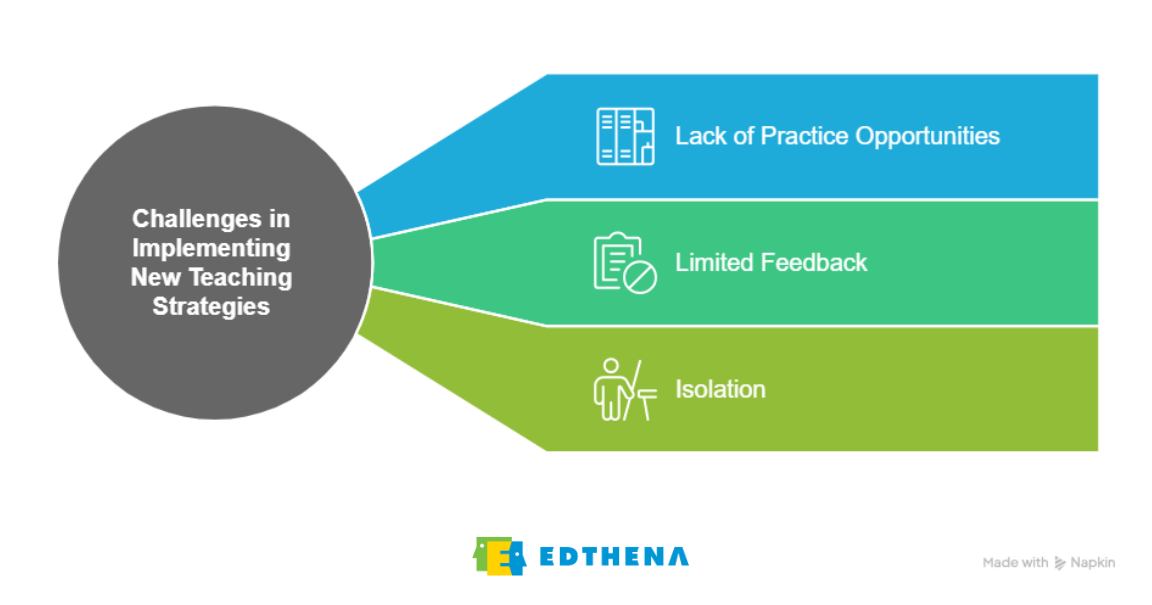
However, implementing a new framework takes more than replacing existing resources and foundational training. For teachers who have spent years building lesson plans and classroom practices around the three-cueing system, the transition can feel overwhelming:
- Teachers lack opportunities to practice new strategies in authentic contexts.
- Limited feedback prevents refinement of new instructional approaches.
- Isolation during implementation reduces confidence and consistency.
The NAEP data provide clues that this approach may be insufficient.
In contrast, a meta-analysis published by the U.S. Department of Education found that teachers who participated in well-designed, sustained PD increased their students’ performance by as much as 21 percent compared to teachers who did not. Ongoing coaching makes a difference!
Essential components of effective Science of Reading professional development
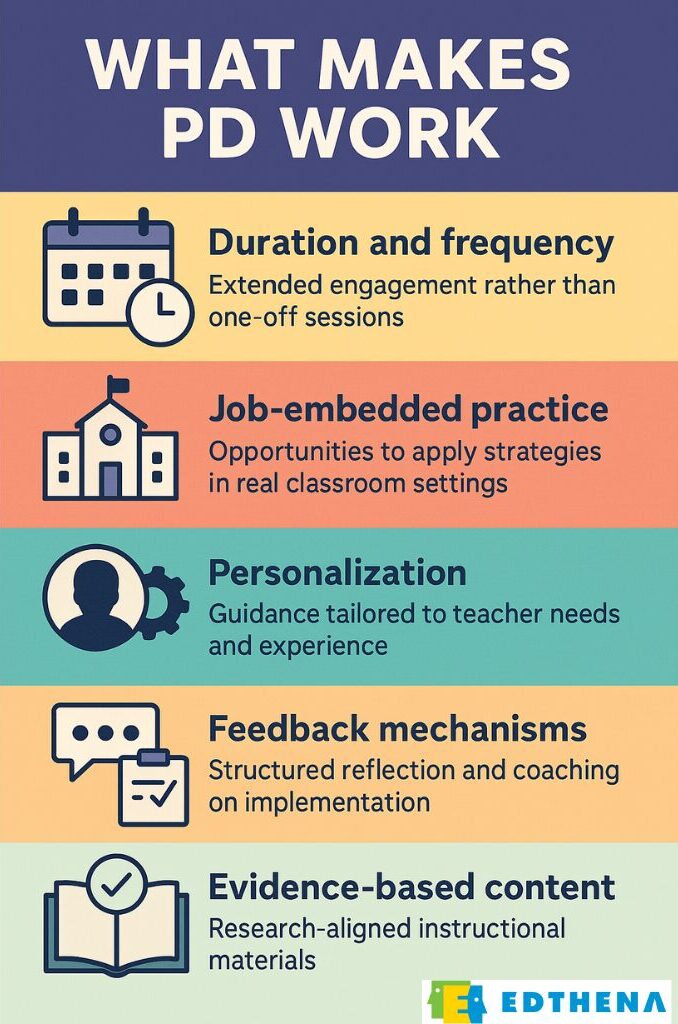
Research confirms that successful professional development programs share several key characteristics:
- Duration and frequency. Extended engagement rather than one-off sessions.
- Job-embedded practice. Opportunities to apply strategies in real classroom settings.
- Personalization. Guidance tailored to teacher needs and experience.
- Feedback mechanisms. Structured reflection and coaching on implementation.
- Evidence-based content. Research-aligned instructional materials.
These elements create a foundation for transformative professional learning that helps teachers move confidently from theory to practice. Schools can deliver this support through various formats, including instructional coaching, professional learning communities (PLCs), peer observation networks, and technology-enabled platforms.
Leveraging technology to implement effective Science of Reading professional development for every teacher
While various professional development models can support Science of Reading implementation, technology-enabled platforms offer unique advantages for scale and sustainability.
For example, using classroom video, the AI Coach platform guides teachers through self-observation, goal-setting, and action planning, directly supporting all five essential characteristics of effective Science of Reading professional development for every teacher, on-demand:
1. Duration and frequency: Sustained engagement through coaching cycles
The AI Coach platform transforms professional development from isolated events into ongoing learning journeys. Unlike traditional one-day workshops, the platform enables:
- Unlimited coaching cycles throughout the school year.
- Self-paced progression that accommodates teacher schedules.
- Continuous access to resources and guidance.
- Cumulative skill building across multiple cycles.
2. Job-embedded practice: Classroom implementation support
The platform centers on actual classroom application rather than theoretical concepts, including:
- Immediate implementation of Science of Reading approaches.
- Video-based reflection on real teaching moments.
- Authentic classroom artifacts as evidence of practice.
- Application of strategies in real-time classroom situations.
3. Personalization: Differentiated learning pathways
Every teacher begins with different knowledge and needs regarding the Science of Reading. The AI Coach platform provides:
- Customizable focus areas within the Science of Reading framework.
- Individualized guidance based on teacher-identified goals.
- Personalized tools and strategy recommendations.
- Flexible pacing that accommodates various experience levels.
4. Feedback mechanisms: Structured reflection and analysis
The platform creates a continuous feedback loop that drives improvement, including:
- Guided self-reflection on recorded classroom instruction.
- Specific observation tips focused on Science of Reading elements.
- Structured analysis of student responses to new strategies.
- Documentation of growth across multiple teaching attempts.
5. Evidence-based content: Research-aligned strategies
Through Edthena’s partnership with Digital Promise, the AI Coach platform ensures all content reflects current reading science by providing:
- A curated library of strategies and resources aligned with proven Science of Reading approaches.
- Research-based instructional techniques for each reading component.
- Clear explanations of underlying reading processes.
By combining self-reflection, classroom video, and evidence-based strategies, the AI Coach platform helps teachers build habits that stick. They don’t just learn the Science of Reading; they internalize, apply, and continuously improve their practice.
Implementing the Science of Reading: Strategic next steps for administrators
As your school transitions from the three-cueing system to the Science of Reading, effective implementation requires thoughtful planning and sustained guidance. Consider these steps to guide your transformation:
- Evaluate your current literacy framework. Conduct a comprehensive audit of existing instructional materials, assessment practices, and professional development to identify where three-cueing approaches may be embedded in your system. This evaluation provides critical baseline data to inform your transition strategy.
- Establish clear, measurable literacy goals. Define specific outcomes for both teacher practice and student achievement that align with Science of Reading principles. Research shows that clear goals increase implementation fidelity and help stakeholders maintain focus during complex instructional shifts.
- Develop a multi-year professional learning roadmap. Rather than relying on isolated training events, create a sustained development plan that builds teacher capacity over time. Include differentiated pathways that address varying levels of teacher experience and confidence with Science of Reading approaches.
- Close the implementation gap through sustained coaching. Research consistently demonstrates that teachers need ongoing reinforcement to translate workshop learning into classroom practice. Consider multiple support systems, including instructional coaches, teacher leaders, PLCs, and technology-enabled solutions like the AI Coach platform, to provide consistent, structured opportunities for practice, feedback, and reflection.
- Leverage technology to complement human coaching. Technology-enabled platforms can extend your capacity to provide individualized guidance for every teacher. Solutions like the AI Coach platform, alongside other digital tools, can ensure teachers receive timely feedback as they implement new instructional approaches in their classrooms.
- Create systems for measuring and celebrating progress. Establish regular checkpoints to gather implementation data and monitor student outcomes. Use these metrics not only to identify areas needing additional focus but also to recognize and amplify successful practices across your school or district.
By taking these strategic steps, administrators can facilitate a successful transition to Science of Reading instruction that leads to sustainable improvements in literacy outcomes for all students.
Learn more about the AI Coach platform and get started today
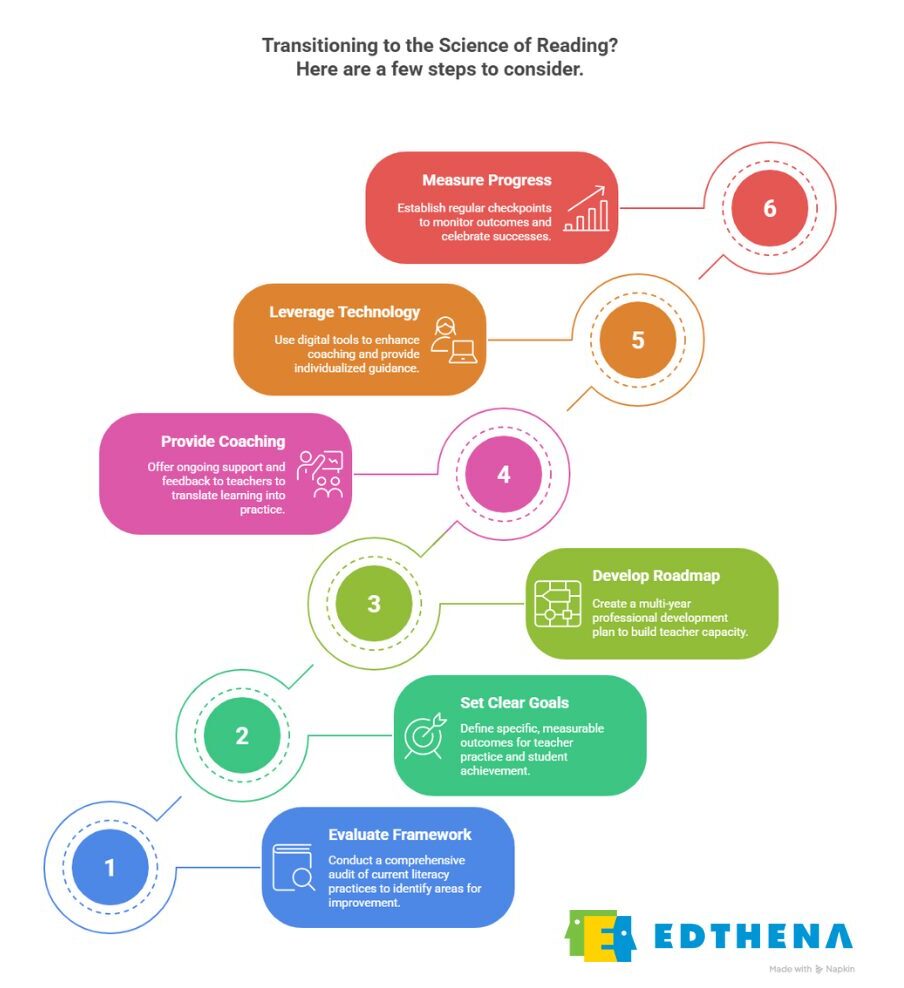
 |
Ruth Calkins is a freelance writer and editor with a strong background in education. She spent over 20 years in K–5 settings—first teaching technology, then in the classroom. Today, she writes and edits elementary-level curriculum, copyedits journal articles, and proofreads educator-focused books. |
